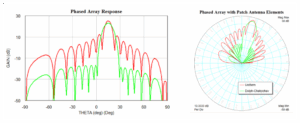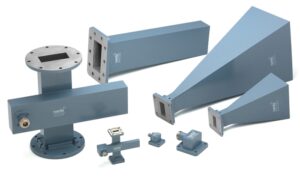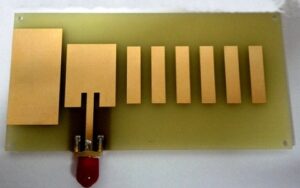Table of Contents
Sectoral Horn antenna (Sectoral Horn)
The gain of the fan-shaped horn antenna is usually between 12dB and 20dB, and the signal gain can be increased to 18dB by using the fan-shaped horn antenna, which is about 30% higher than that of the traditional omnidirectional antenna. The signal quality can be improved by up to 40% with fan-horn antennas, which typically have a reflection loss of less than -15dB.
The fan-horn antennas operate in the frequency range of 2GHz to 18GHz and are suitable for a variety of wireless communication standards such as Wi-Fi, LTE and 5G. According to industry reports, in the deployment of 5G base stations, the application rate of E-plane fan-shaped horn antennas has reached 70%.
The beam width of the E-plane fan-shaped horn antenna is generally between 30 degrees and 90 degrees, while the beam width of the H-plane fan-shaped horn antenna can reach more than 120 degrees. An IT company in Shanghai has established a stable wireless bridging system between its office buildings using E-plane fan-shaped horn antennas, with data transmission rates reaching 1Gbps.
According to the “Electronic Engineering Special Issue” reported that during the 2018 World Cup, the organizers deployed multiple sets of H-plane fan-shaped horn antennas in the stadium, ensuring that each audience can receive stable Wi-Fi signals covering an area of 2 square kilometers.
A standard fan-horn antenna costs about $500, while an omnidirectional antenna with the same performance costs more than $700. It usually takes no more than two hours to install a fan-horn antenna and costs about $200 in labor, while a traditional antenna takes twice as long and costs twice as much.
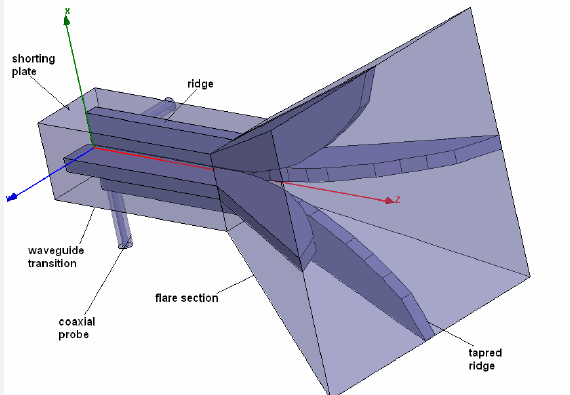
Conical Horn antenna
The gain of the cone horn antenna is between 10dB and 20dB, and the gain of a cone horn antenna with a diameter of 30 cm can reach 16dB at 10GHz. Operating in the frequency range of 1GHz to 40GHz, it is suitable for a variety of wireless communication standards and radar systems. The application frequency range of the conical horn antenna is between 8GHz and 12GHz, and this band is known as the X-band, which is the main frequency band for radar applications.
The beamwidth of the conical horn antenna is from 10 degrees to 60 degrees, and in satellite communication, the beamwidth of the conical horn antenna can be controlled within 15 degrees to ensure accurate signal transmission. With a cone horn antenna with a diameter of 50 cm, gains of up to 20dB can be achieved at 20 GHZ frequencies, and the signal quality can be improved by 40% with a cone horn antenna.
According to the U.S. Department of Defense, the F-22’s radar system uses multiple sets of conical horn antennas, which operate in the frequency range of 10GHz to 12GHz. A standard tapered horn antenna costs about $800, while a parabolic antenna of the same performance costs more than $1,200, and the installation time of a tapered horn antenna is usually no more than 3 hours, requiring about $300 in labor costs, while the installation time and cost of a traditional antenna is twice that.
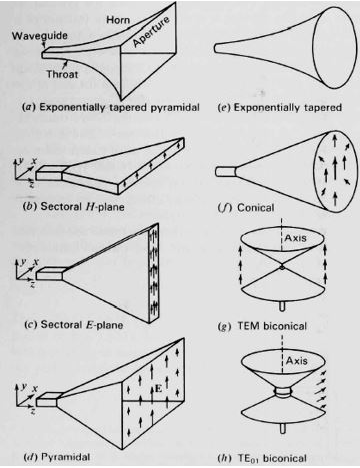
Pyramidal Horn
Pyramid horn antennas have a gain range of 15dB to 25dB, and pyramid horn antennas with dimensions of 20x15cm can gain up to 18dB at 10GHz frequencies. Pyramid horn antennas operate in the frequency range of 1GHz to 40GHz and are suitable for a variety of wireless communication standards and radar systems, especially in the application range of 5GHz to 35GHz.
The beam width of the pyramid horn antenna is between 10 degrees and 50 degrees, and the beam width of the pyramid horn antenna can be controlled within 20 degrees in the radar system. Using pyramid horn antennas with dimensions of 30×20 cm, gains of up to 20dB can be achieved at 10GHz frequencies.
A pyramid horn antenna usually takes no more than 2 hours to install and costs about $250 in labor, while a traditional antenna takes twice as long and costs twice as much to install. And the use of pyramid horn antenna can improve the signal quality by 35%, pyramid horn antenna reflection loss is usually less than -20dB.
Exponential Horn
The gain range of the exponential horn antenna is usually between 15dB and 30dB, and the gain of an exponential horn antenna with a size of 25×20 cm can reach 22dB at 10GHz frequency, and it works in the frequency range of 2GHz to 40GHz, which is suitable for various wireless communication standards and radar systems. In particular, it performs well in the 5GHz to 35GHz range.
The beam width of the exponential horn antenna is between 10 degrees and 50 degrees, and the beam width of the exponential horn antenna can be controlled within 15 degrees in the radar system. With an exponential horn antenna size of 40×30 cm, gains of up to 25dB can be achieved at 20GHz frequencies.
A standard exponential horn antenna costs about $900, while a parabolic antenna of the same performance costs more than $1,300. An exponential horn antenna usually takes no more than three hours to install and costs about $300 in labor, while a traditional antenna takes twice as long and costs twice as much to install. The reflection loss of the exponential horn antenna is usually less than -25dB, and the signal quality can be improved by 40% using the exponential horn antenna.

